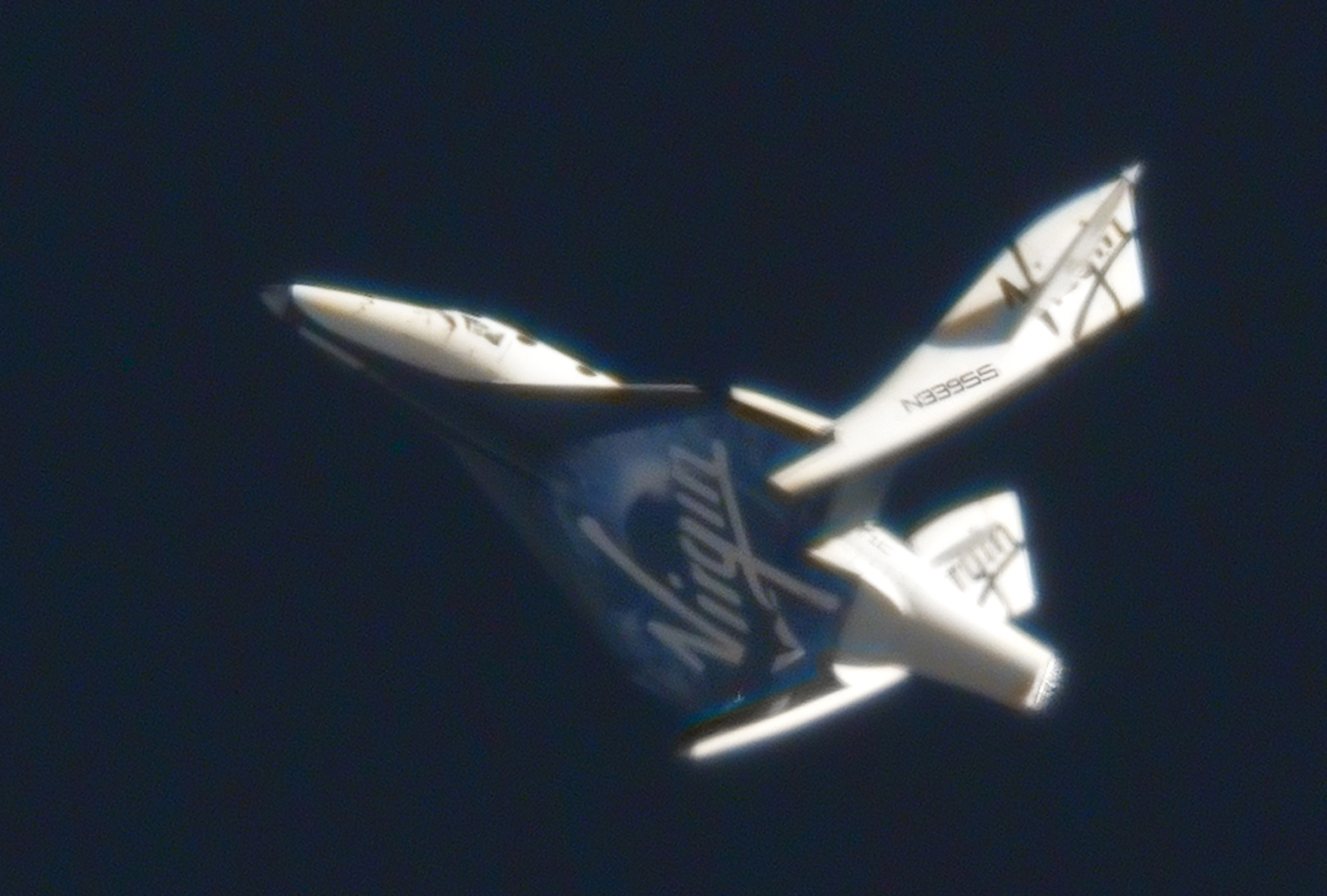
Virgin Galactic's Private Spaceship Makes Safe Landing After Tense Test Flight

A malfunction during the most recent test flight of the private spacecraft SpaceShipTwo sent the vehicle hurtling out of control until its crew could stabilize the craft for a safe landing.
The issue provided some heart-stopping moments for its airborne crew and ground handlers, but also allowed the vehicle's owner, Virgin Galactic, to showcase the craft's safety features.
The commercial space plane made its 16th glide flight on Sept. 29, following a hiatus for hangar work. For the first time, SpaceShipTwo carried a three-person crew — two pilots and a flight test engineer. [Gallery — SpaceShipTwo Makes First Glide Flight]
To begin, SpaceShipTwo was lifted to high altitude by its carrier plane, WhiteKnightTwo. After a clean release from WhiteKnightTwo, SpaceShipTwo immediately entered a rapid descent. Springing into action, the crew deployed the ship's novel feather re-entry system.
SpaceShipTwo's ability to feather its tail section is a safety feature that increases the vehicle's stability during atmospheric re-entry. Akin to the flight of a shuttlecock in badminton, the feather system allows SpaceShipTwo to rely on aerodynamics and the laws of physics to control speed and altitude.
The glide flight lasted a brief 7 minutes and 15 seconds.
Downward pitch rate
Get the Space.com Newsletter
Breaking space news, the latest updates on rocket launches, skywatching events and more!
"Upon release, the spaceship experienced a downward pitch rate that caused a stall of the tails. The crew followed procedure, selecting the feather mode to revert to a benign condition. The crew then de-feathered and had a nominal return to base," according to an updated flight log posted by Scaled Composites, builder of the WhiteKnightTwo/SpaceShipTwo launch system.
Scaled Composites is constructing the private spaceship fleet for Virgin Galactic, a spaceline company for suborbital space tourism backed by U.K. entrepreneur Richard Branson.
"Great flying by the team and good demo of feather system," Scaled officials wrote in the flight log.
According to one observer of the craft's rapid descent, "It dropped like a rock and went straight down. Typically, it takes 11 minutes to land, but this time it was only seven minutes before they were on the ground. It was a nail-biter … but that's how you learn."
Flight envelope
George Whitesides, Virgin Galactic's chief executive officer and president, said the glide flight included a third seat flight test engineer onboard SpaceShipTwo for the first time. "A good capability for us to have for this phase of test," he told SPACE.com. "Yes, apparently the tails exhibited stall characteristics in the test — which was a steep nose down maneuver."
Whitesides confirmed that SpaceShipTwo was ultimately able to carry out a nominal landing.
"Scaled is looking at the data now, but doesn't anticipate any major issues," Whitesides said. "This is why we flight test, to fully explore the aerodynamic flight envelope."
NASA shuttle leader joins team
Meanwhile, in other Virgin Galactic news, the company has announced the appointment of former NASA executive Mike Moses as its new vice president of operations.
Moses' NASA career included serving at the NASA Kennedy Space Center in Florida as the launch integration manager from 2008 until the landing of the final space shuttle mission in July 2011. He was responsible for supervising all shuttle processing activities from landing through launch, and for reviewing major milestones, including final readiness for flight.
According to a Virgin Galactic statement, Moses will develop and lead the team responsible for Virgin Galactic spaceship operations and logistics, flight crew operations, customer training and spaceport ground operations, primarily focusing on overall operational safety and risk management.
Leonard David has been reporting on the space industry for more than five decades. He is a winner of this year's National Space Club Press Award and a past editor-in-chief of the National Space Society's Ad Astra and Space World magazines. He has written for SPACE.com since 1999.
Join our Space Forums to keep talking space on the latest missions, night sky and more! And if you have a news tip, correction or comment, let us know at: community@space.com.

Leonard David is an award-winning space journalist who has been reporting on space activities for more than 50 years. Currently writing as Space.com's Space Insider Columnist among his other projects, Leonard has authored numerous books on space exploration, Mars missions and more, with his latest being "Moon Rush: The New Space Race" published in 2019 by National Geographic. He also wrote "Mars: Our Future on the Red Planet" released in 2016 by National Geographic. Leonard has served as a correspondent for SpaceNews, Scientific American and Aerospace America for the AIAA. He has received many awards, including the first Ordway Award for Sustained Excellence in Spaceflight History in 2015 at the AAS Wernher von Braun Memorial Symposium. You can find out Leonard's latest project at his website and on Twitter.









